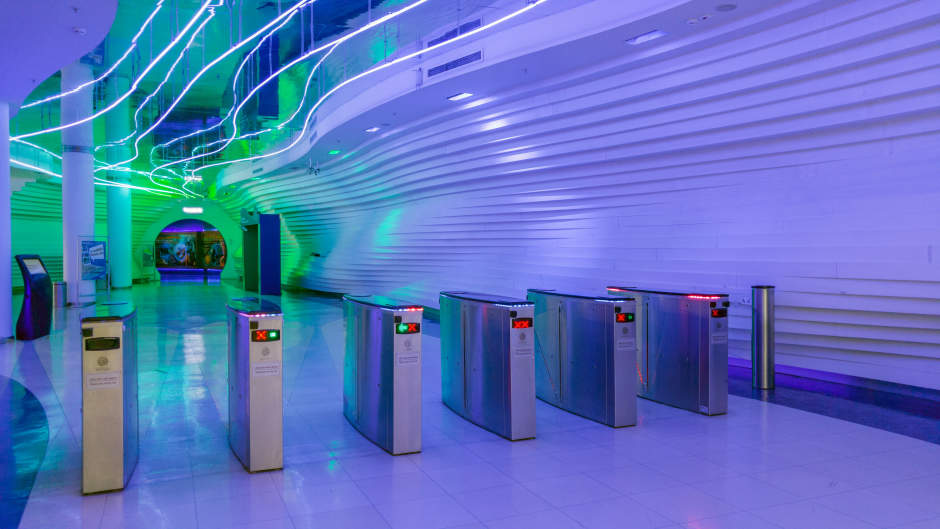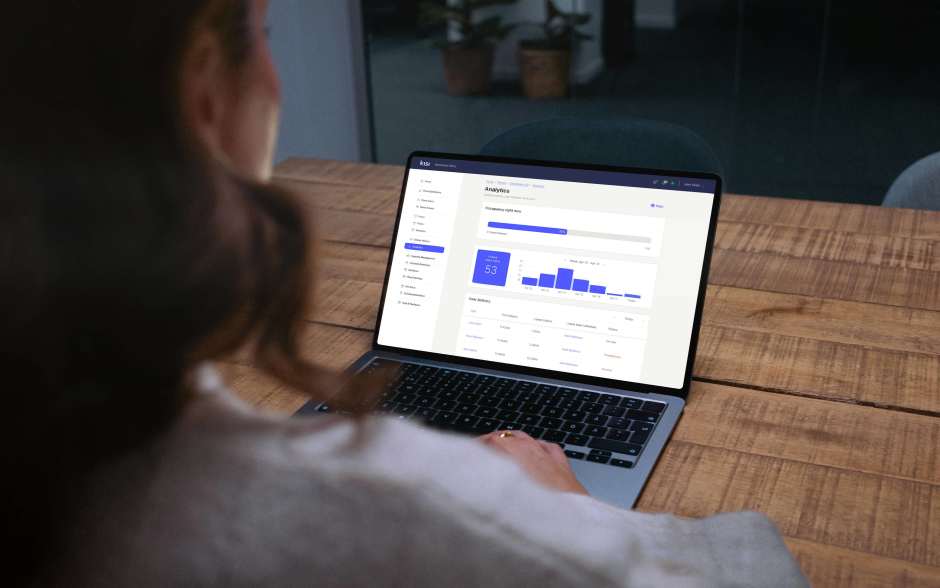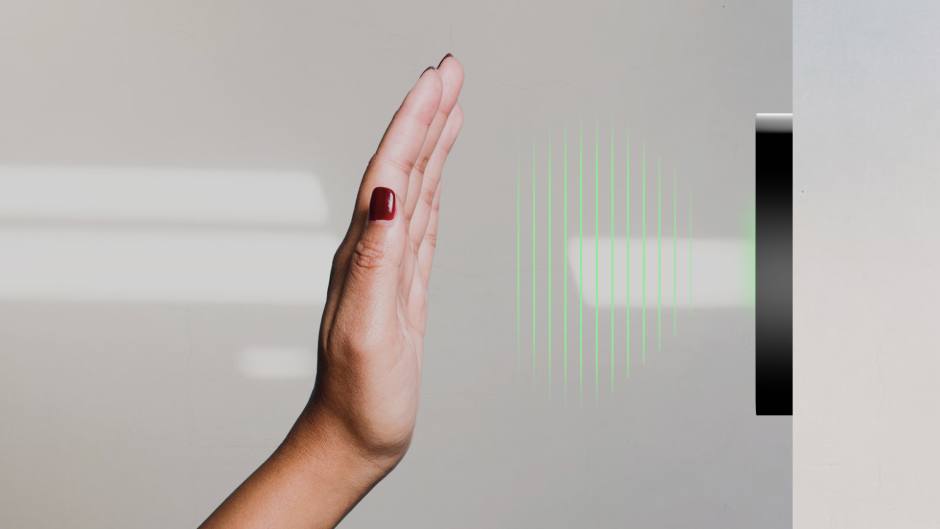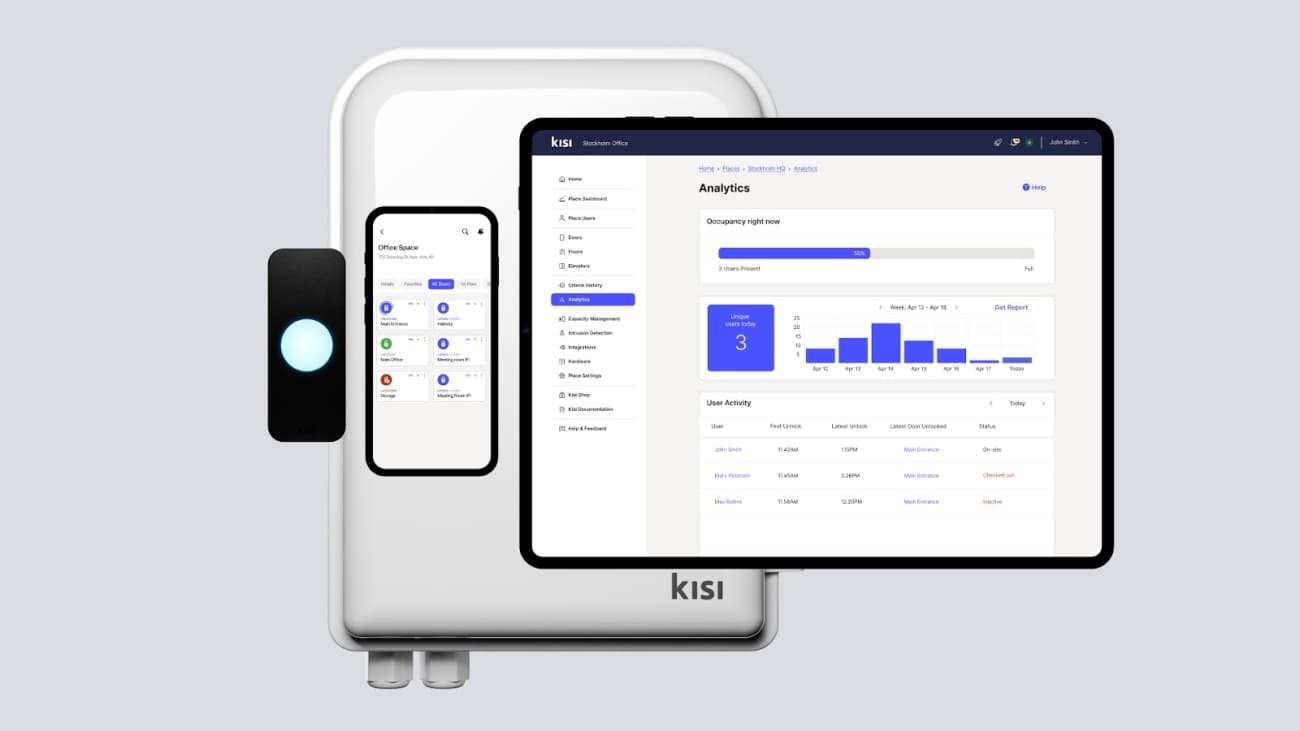Head to a local subway station, museum, or theme park and there’s a good chance that you’ll see a security turnstile. These gates are a popular way to control traffic and make spaces safer for the public. In recent years, they’ve evolved to allow for more flexibility and advanced features like data analytics.
In this article, we’ll explain how turnstile security works, why it’s beneficial, and how a gate can integrate with your access control system. Understand the purpose and functionality of security turnstiles to evaluate whether they’re a practical option for your property.
What are security turnstiles? #
Security turnstiles are gates or barriers that prevent unauthorized access to indoor and outdoor spaces and manage foot traffic. Although there are different kinds of turnstiles, most of them consist of these components:
- Frames: The exterior or frame of the turnstile is attached to the ground and physically blocks people from entering the space without passing through the gate.
- Arms or doors: Some turnstiles have gate arms that rotate or swing to allow entry or exit, others have doors, and some are open.
- Control modules: The control module receives signals from sensors built into the turnstile frame.
- Access credentials: Authorized users present their credentials, such as cards, badges, or mobile devices, to pass through the turnstile.
- Credential readers or scanners: Many turnstiles feature devices that read or detect credentials, triggering the gate arm, door, or other barrier to open.
- Alarms: Some turnstiles also feature alarm systems that activate if someone passes through without scanning their credentials, attempts to force their way past, or holds it open while entering.
Keep in mind that the specific components of a security turnstile differ based on the design and features you choose.
Types of turnstiles #
If you decide to add a turnstile to your property, it’s important to evaluate all your options. Depending on your security concerns and the architecture of the space, some kinds of turnstiles may be a better fit than others.
Waist-high turnstiles #
Waist-high turnstiles are constructed of a tripod barrier arm that rotates forward when someone presents their credentials. They’re popular for indoor and outdoor use, particularly at stadiums, theme parks, and public transportation sites, such as subways. Although they have a sturdy construction, the low height makes these turnstiles easy to climb over or bypass. As a result, they’re less secure than some other options and may not be ideal for locations with strict entry authorization requirements.

Optical turnstiles #
Optical turnstiles are available with or without barriers, such as drop or swing arms or retractable or swing glass. They consist of two cabinets with a space in between and sensors that can detect and track people as they walk through the lane.
Also known as speed gates, these turnstiles are a good option for organizations that prioritize speedy entries and don’t want to detract from the aesthetics of their space. For example, corporate lobbies and health clubs might prefer optical turnstiles because of their sleek and modern design.
Full height turnstiles #
As the name suggests, full height turnstiles are much taller than other varieties, extending from the floor to the ceiling. They use rotating barriers similar to revolving doors and can be installed individually or in pairs.
These turnstiles take up significantly more space and generally aren’t as aesthetically pleasing as optical and waist-high options. They’re most appropriate for locations with especially high security risks. They’re also useful for partially or fully unmanned sites that need to maintain strong security protocols.

ADA-compliant gates #
Organizations that want to maintain compliance with the Americans with Disabilities Act (ADA) sometimes install specially designed turnstiles. The ADA requires businesses that serve the public to offer equal access to their goods and services. If an architectural barrier, such as a turnstile, does not allow a person to enter the facility, it constitutes an ADA violation.
ADA-compliant turnstiles ensure that everyone can easily and safely enter your space. In addition to offering hands-free access, the lanes are typically wider so that wheelchair users can reach their destination without struggling to maneuver through the turnstile.
Advantages of turnstile security #
Security turnstiles come with some significant drawbacks, primarily because of their bulky size. However, they also offer several practical and financial benefits.
Improved safety and crime deterrence #
The most notable advantage of using turnstiles is strengthening building security. They allow you to detect unauthorized entries and also help to discourage intruders, trespassers, and other bad actors from entering your space. Access control turnstiles also reduce issues with tailgating—where an unauthorized person enters a door by closely following an authorized individual.
Depending on the type of turnstile you use and whether you connect it with a modern access control system like Kisi, you might also have the option to create access schedules. This allows you to grant access only during certain times or days and lock down your premises outside of your operational hours.
Streamlined entry and crowd control #
Turnstiles, particularly speed gates, allow traffic to move more quickly than some locked doors. This is especially important for organizations that accommodate large crowds or a constant stream of people.
In addition, you can use turnstiles to manage and monitor the number of people that enter or exit a building or space. For example, if you’re hosting an event at your location and worry that you might exceed your capacity, you can use your turnstile to accurately track the number of visitors and refuse entry once you have reached your limit.
Reduced staffing requirements #
Self-validation is more convenient for people trying to enter your spaces, and it also eliminates the need for 24-7 staffing. When visitors, guests, and employees use turnstiles, you can consider leaving spaces unmanned. If you employ a receptionist or security guard, they can focus their attention on more productive tasks rather than constantly verifying credentials.
Usage data #
Because turnstiles can track the number of people who enter and exit a space, they provide valuable data that you can use when planning future events and managing capacity issues. More businesses than ever are moving to hybrid work models and offering remote options to employees. As a result, occupancy data and tracking have become vital to planning and space utilization. When you pair an access control turnstile with a system like Kisi, you can gather accurate data about when spaces are in use and who is using them.
Use cases for access control turnstiles #
Turnstiles are a potential solution for a variety of venues, including museums, commercial offices, public transportation hubs, and coworking spaces. Depending on the property design and your security needs, you might consider installing turnstiles in these locations:
- Reception areas and lobbies: Turnstiles simplify the check-in process and eliminate the need for constant employee coverage.
- Ground-level elevators: Using turnstiles for elevators prevents large groups from accumulating at the elevator doors and improves security in large commercial buildings.
- Amenity areas: Installing turnstiles outside on-site gyms or cafeterias helps prevent overcrowding and allows you to limit access to authorized employees or guests.
- Large conference rooms or event spaces: Turnstiles help you track attendance at events and ensure only invited attendees can enter.
- Outdoor entrances: Some organizations place turnstiles outside of the building to control the flow of traffic and prevent unauthorized individuals from entering.
Unlike some other gates or barriers, turnstiles are often present at a single location within or outside of a building. Consider installing security turnstiles as your first line of defense against intruders in high-traffic areas and using other access control options for smaller spaces, such as offices and lounges.

Integration options for security turnstiles #
A turnstile in and of itself can be an effective security measure, but it’s much more successful when paired with a modern access control system like Kisi. Some of the advanced functionalities you can achieve by combining Kisi with security turnstiles include:
- Centralized, remote management: Because it’s a cloud-based system, you can access Kisi from anywhere. This allows you to modify authorizations, shut down turnstile lanes, and grant temporary access even when you’re off-site.
- Reports and analytics: Knowing what’s happening with your turnstiles at any given moment is crucial to your ability to understand movement at and around your property. WIth Kisi, you can keep track of every individual who enters and leaves your property and generate ad-hoc and scheduled reports.
- Versatile access credentials: Kisi’s Reader Pro and Terminal Pro allow for a wide range of access methods, including QR codes, badges, fobs, web-links, and a variety of mobile credentials, offering greater convenience and flexibility for employees and visitors. Your team can also use employee badges in their Apple Wallets to quickly unlock and pass through a turnstile.
When adding a Kisi Reader to a security turnstile, take care to place it in a location that will allow for the best possible performance. This generally means that you should place the reader on the outside of the turnstile rather than the inside.

How to choose the right turnstile #
Finding a turnstile that works with your property can be challenging if you’ve never explored them in the past. Every organization has unique requirements to address, but researching these key points will help you narrow your options.
1. Assess your security requirements #
Before choosing a turnstile, think about the traffic flow and patterns in your property. If there are certain areas that are especially vulnerable to criminal activity and see heavy traffic, using a full-height turnstile might be ideal. On the other hand, if security risks are relatively limited and you simply want to control the flow of traffic, a waist-high or optical turnstile is likely a better option.
2. Evaluate your infrastructure and architecture #
The layout and size of your space is one of the most critical factors when deciding what type of turnstile is appropriate. Determine whether there’s enough available space to install such a large security barrier, and examine whether a turnstile would impede or improve your traffic patterns. In addition, think about whether you’ll use your turnstile inside a building or at an outside area or entrance.
3. Consider cost-efficiency and future-proofing #
Turnstiles are often expensive, in no small part because of their size and installation requirements. Compare what you have to gain—in terms of staffing, security issues, and efficiency—with the initial and ongoing costs.
When you think about expenses, look at the future as well as the present. Will advances in technology require you to tear out and replace your turnstile system, or can you easily upgrade it to keep up with the newest and best developments? The answer to this question can tell you a lot about how much you might have to spend on your turnstile security system moving forward.
4. Plan for potential turnstile security challenges #
Installing turnstiles could complicate certain aspects of your building or property management. Some of the difficulties you might encounter include:
- Finding adequate space
- Integrating with your existing systems, such as video surveillance and access control
- Ensuring the appearance of the turnstiles doesn’t detract from the overall aesthetic of the space
- Installing a backup power source in case of power failures, which cause turnstiles to shut down
For some companies, even one of these possible hurdles is a deal-breaker. However, if a turnstile is the right solution for your space, taking a proactive approach to these obstacles will help you minimize problems and mitigate the risks.

What’s next for security turnstiles and access control? #
Over the next several years, turnstiles will likely become more sophisticated and accurate. Some areas that may improve turnstile access control include identification methods, with facial and vein recognition becoming more common. Biometric access methods, of course, still have drawbacks, like privacy and scalability.
Artificial intelligence (AI) and machine learning (ML) may also play a part in future turnstile access control. These technologies will improve tailgating detection and allow organizations to identify and predict traffic patterns. This allows for better preparation and a preventive approach to security and crime prevention.
If you’re looking for a future-proof solution, you can count on Kisi. With a constant focus on enhancing security and streamlining operations, integrating Kisi’s access control system is a natural solution. Contact our security experts to see how Kisi can enhance your security and if turnstiles are the right option for your needs.






